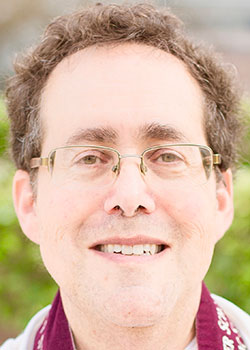The world can be a very scary place. Every time we pick up the morning’s paper, or turn on the television, the media provides us with more evidence of just how terrifying life can be. Fires raging out of control, brutal warfare abroad, incessant terrorist attacks, and gangs and criminals terrorizing our streets, illness, death, unemployment, and a host of more private sorrows are the constant companions of the living. There isn’t a person alive who hasn’t tasted the bitterness of disappointment and of tragedy. We are all wounded by the simple act of staying alive.
The dangers of life are not simply the innovation of modernity. On every page of the Torah we read of the challenges and torments that afflicted our ancestors—childlessness, sibling rivalry, murder, loveless marriage, rape, war. Even the greatest of all prophets, our rabbi Moses, encountered enough bitterness that he several times suggested that his own death would be preferable to the life he was living. So it becomes particularly noteworthy to listen in on his Farewell Address, delivered on the border of the Promised Land, with the People Israel assembled and attentive to their aged and unparalleled leader.
What new message did Moses bring? Twice in this week’s parashah, he repeats the same idea: “Fear not, and be not dismayed” and “Have no dread or fear of them.” In fact, Moses goes further than merely insisting that Israel should not fear. He quotes God as saying “I have delivered him [Canaan] into your hand.” Note, the Torah doesn't promise “I will deliver him” but assures that the deed is as good as done.
What’s going on here? Surely Moses, a man who has suffered so profoundly, knows that life is no bed of roses. So how can he offer this sugary, Pollyannaish advise of “Don’t worry; be happy.” We have good reason to fear! So why is God so adamant on this point?
Perhaps what the Torah is teaching us is the right attitude with which to face and meet life’s impediments. In a sense, our propensity to fear can be our worst enemy, more dangerous than the object of our fear itself. In the face of the unknown, our fantasies are often more ominous than our realities. In the face of life’s challenges, giving way to our pessimism, our trepidation, and our fear strips us of our ability to see a way out and of our will to fight. Fear is the ally of tragedy, transforming spirited and resourceful humans into whimpering and passive victims.
Half of the battle lies in a refusal to give in to fear in our stiff-necked resistance to dismay.
The Midrash, Bereshit Rabbah, hints of the power of hope and faith in the face of danger and hostility. Commenting on God’s assurance that the Canaanites have already been delivered into our hands, the midrash offers three scenarios that justify that happy foregone conclusion: the first is that when Abraham was confronted by the plotting king and ancestor of the Canaanites, Og, Abraham continued the mitzvah he was engaged in: preparing the matzot for Pesah. A second Midrashic explanation says that the deliverance of the Canaanites into Israel’s hands was assured when Og threatened to kill Isaac, and Abraham responded to that threat by going ahead with the mitzvah of brit milah (ritual circumcision). The third and final explanation concerns Jacob: Og sought to cast the evil eye on Jacob, and Jacob continued the mitzvah he was engaged in: blessing Pharaoh.
The power of Jacob’s blessing was stronger than Og’s evil eye. The mitzvah of celebrating our inner freedom was more conclusive than any contemplated attack, and the continuity and holiness of celebrating the birth of a Jewish child was more compelling than Og’s murderous intent.
Ultimately, the faith of the Jew is the resilience of hope. Refusing to give in to despair, refusing to be crippled by tragedy, the Jew musters the inner resilience that comes from spiritual depth and a vision of holiness that transcends time. It is not that we can avoid suffering entirely, but we can fashion our response to suffering. And just as our patriarchs responded to suffering with a renewed commitment to the mitzvot, to the Jewish people, and to God, we too can make our mark in the world by how we choose to confront pain and disappointment.
By living our lives in way of goodness, by cultivating a rich connection to our God and the mitzvot, by making it our business to alleviate the suffering of others, we vindicate Moses’ insight and embody his remarkable courage: Fear not and be not dismayed.
Shabbat shalom.

